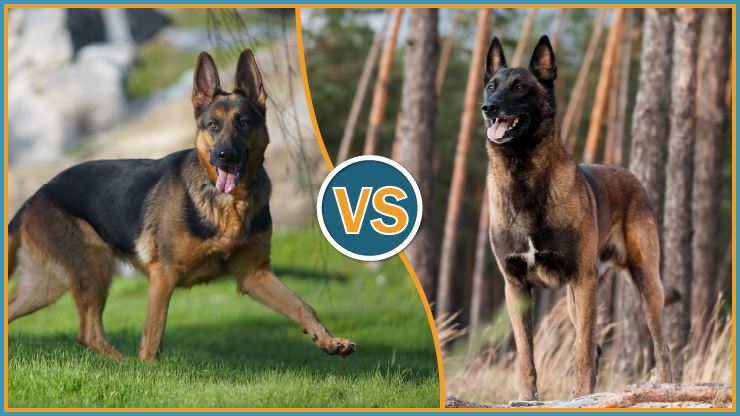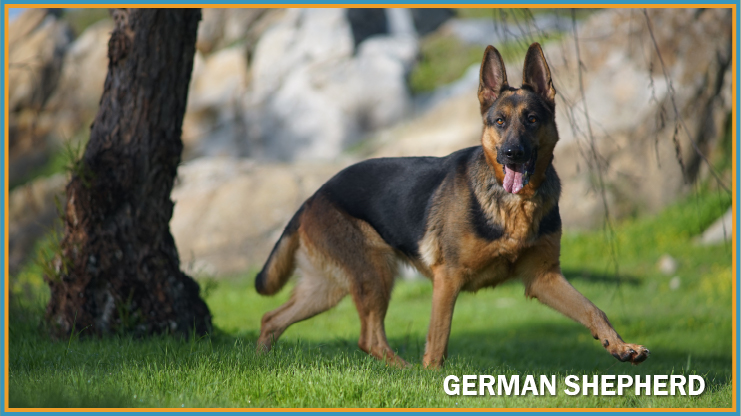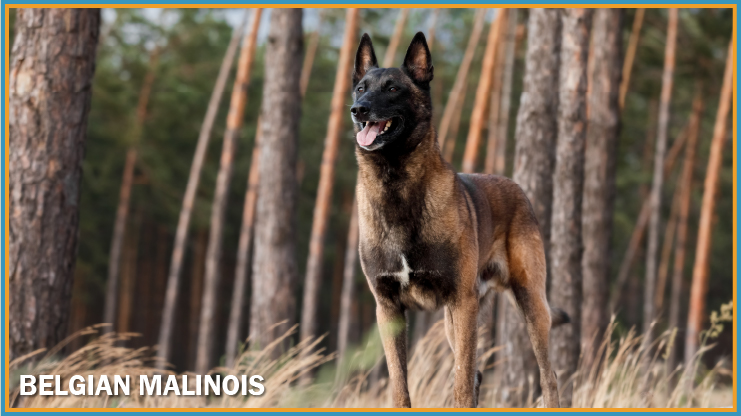
GERMAN SHEPHERD VS. BELGIAN MALINOIS: CAN YOU TELL THEM APART?
In the last blog, we discussed the American Pit Bull Terrier and the American Staffordshire Terrier. This time, we will consider the similarities and differences between the German Shepherd and the Belgian Malinois. Let’s take a look!
Brief History of the German Shepherd
The ancestors of the modern-day German Shepherd were originally farm dogs, guarding their family’s flocks and herds. But these dogs also patrolled and protected the herd and the shepherd from outside dangers and predators. Although the breed’s ancestors can be traced back to the earliest flock and herding dog types, the German Shepherd breed wasn’t organized until the 1800s by Captain Max von Stephanitz, named the Father of the German Shepherd breed.
Von Stephanitz admired Germany’s best all-purpose working dogs but feared the dogs might disappear as the flocks and farms became smaller. Stephanitz created the official governing body for the breed and then created the Schutzhund trial to determine the dog’s ability to work. The test consisted of basic obedience commands such as sit, stay, and retrieve and also included a section where the dog had to attack on command. If the dog failed the test, he could not be bred. The results of the Schutzhund trial can be seen in the intelligent and versatile modern-day German Shepherd.
Today, the German Shepherd has proven to be a very adaptable breed. It can do nearly anything, including protecting sheep, guarding homes, assisting people with disabilities, aiding the police in search and rescue missions, and, most importantly, loving and loyally serving its family.

Brief History of the Belgian Malinois
Dogs have been an integral part of Belgium’s history, with shepherd dogs appearing as far back as medieval times. Before the development of modern-day dog breeds, dogs were bred for function over form. Dogs that performed a specific type of job could have a variety of appearances. They ranged from large to small and varied in coat lengths and colors depending on the physical characteristics selected to perform a specific job, the genetics available in a certain population, and regional styles or preferences.
It wasn’t until the end of the nineteenth century when Professor Adolphe Reul of the Belgian School of Veterinary Science realized that, while the regional working dogs were different in some aspects such as coat type, color, and coat length, they were also similar in size, working style, and overall type. He categorized them into eight varieties, further condensing them down to the four varieties we see today. This includes the Groenendael, Laekenois, Malinois, and Tervuren.
In Belgium, the breed’s country of origin, these are all considered four varieties of one breed since all four varieties would appear in one litter up to the time they were sorted. However, some other organizations consider them four separate breeds. Continental Kennel Club considers them to be four varieties of the same breed: the Belgian Sheepdog.
Similarities
These dogs share the same breed group of Pastoral and Stock Dog Breeds and the same subgroup, Large Pastoral Dogs. These breeds have similar temperaments and are highly intelligent, agile, powerful, capable of many feats, and can be protective of their families. They are very active and excellent working dogs for jobs like herding or helping with the military and police.
The German Shepherd and Belgian Malinois are often mistaken for each other because of their general looks. Both breeds' most common colors include a tan or red base, with black, but the patterns, or distribution of the colors, are notably different. The standard color pattern for Belgian Malinois is a tan-to-red base with characteristic black masks. The typical German Shepherd is a tan to red base color with black saddle markings. A closer look can spot their differences!

Differences
The German Shepherd is built for both speed and strength. The body is overall more muscular and the larger of the two breeds. German Shepard males can weigh from 66 to 88 pounds and stand 23 to 26 inches tall. Females can weigh from 48 to 71 pounds and stand from 21 to 24 inches in height. An important feature of the German Shepherd is that it should never be exaggerated in any one area, including size. It should be neither overly large to reduce agility nor overly small and lacking in power. The ears of the German Shepherd tend to be larger than that of the Belgian Malinois. The coat is also fuller and slightly denser. The tail is set low, giving a gentle slope to the topline. In profile, the muzzle of the German Shepherd often exhibits a distinctive hump, giving a noble expression. German Shepherds can come in a range of color patterns, including solids in black and white, fawn similar to that of a Belgian Malinois, wolf-agouti, and some are even born with a rare color pattern mutation called Panda.
The Belgian Malinois is built for speed, dexterity, and stamina, with a leaner body and a slightly lighter build than their German cousins. The ears of the Belgian Malinois tend to be smaller, pointier, and more triangular in shape. The Belgian Malinois muzzle is straight, typically without the distinctive slight hump seen in the German Shepherd breed. The coat of the Belgian Malinois is less dense and more fitting, giving a more athletic appearance. Belgian Malinois males can weigh from 55 to 66 pounds and stand between 23 and 27 inches tall at the shoulder. Females weigh between 44 and 55 pounds and stand 21 to 25 at the shoulder. The tail of the Belgian Malinois is set slightly higher than the German Shepherd, and the topline is more level instead of sloped, with less slope to the croup, as well. Belgian Malinois traditionally come in less color patterns than German Shepherds. The standard color is a uniform fawn with a tan-to-red coat and a black mask. However, occasionally solid black Belgian Malinois are born.
Conclusion
The German Shepherd and the Belgian Malinois are always alert and ready to work. They are usually lively in personality and attentive to their owners. These dogs need plenty of exercise to avoid getting bored and developing destructive behaviors. It should also be noted that both breeds are constant shedders and blow their coats at least twice a year, so regular grooming is required to keep these proud dogs looking their best!
Click here for the complete German Shepherd breed standard.
Click here for the complete Belgian Malinois breed standard.










